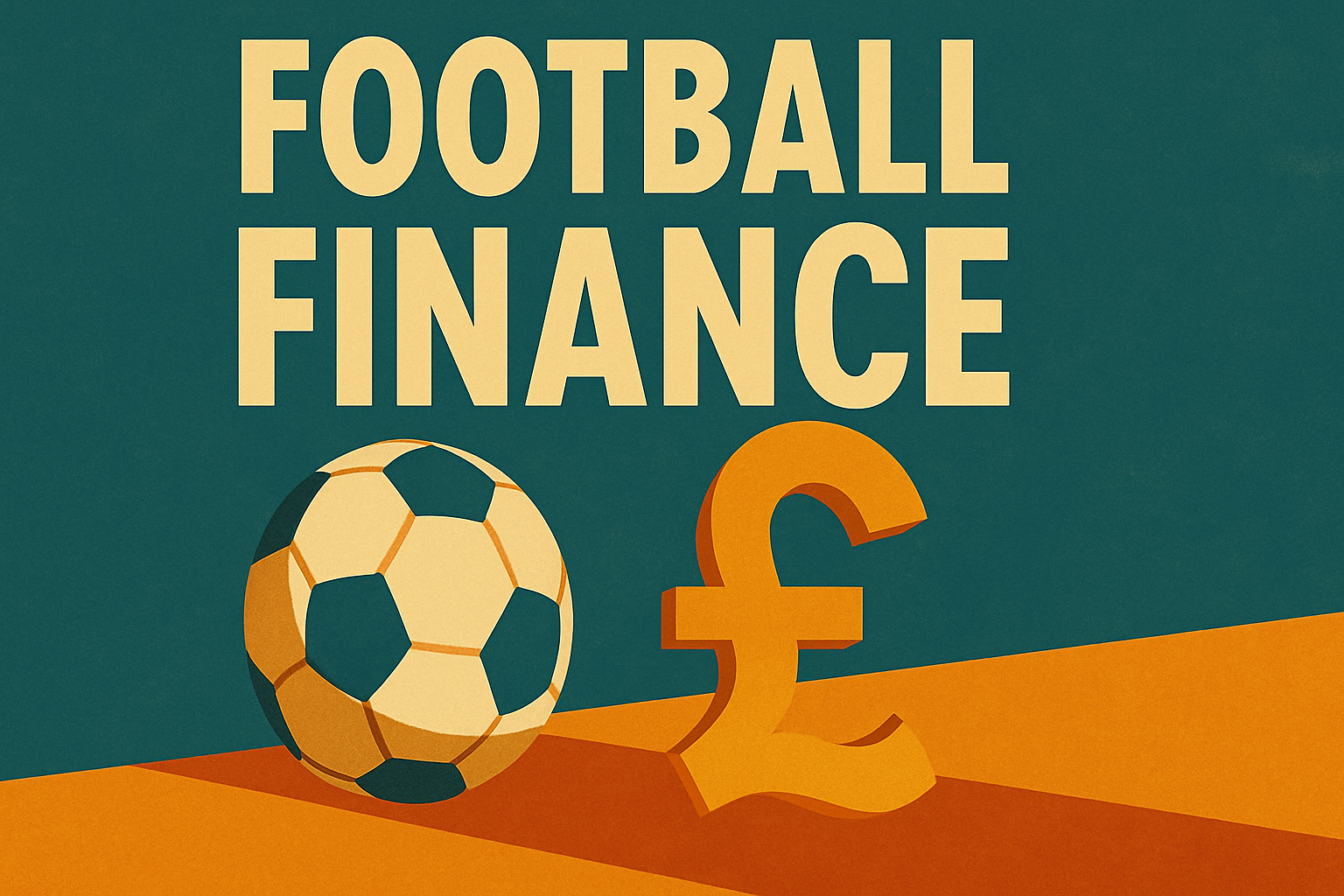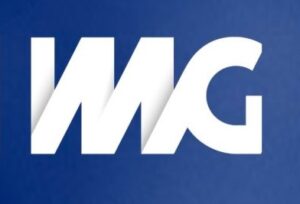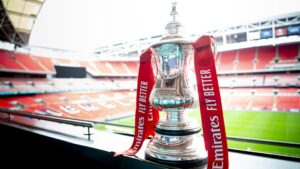Over more than three decades, Charlie Clapham was one of the most influential figures in Southport FC’s modern history. Supporters have long debated his legacy: some highlight the financial stability and structural rebuild achieved during his tenure, while others point to missed opportunities and a perceived lack of ambition. As the club begins another period of change – and contends with the consequences of financial decisions made since his departure – the time is right to ask: what did Clapham actually leave behind?
Was Southport a club stuck in the past? Or one that had quietly built the foundations of financial health that others failed to protect?
Those who lived through the trauma of the early 1980s tend to view him as the man who professionalised and safeguarded the club. Others, who came later, sometimes see missed opportunities, underinvestment, and a club that stood still when it should have pushed on.
But viewed over the span of four decades, the story becomes clearer: Southport’s transformation from a financial basket case to a solvent and structured club was no accident. And just as clearly, the move away from those principles after 2017 led to a financial and organisational unravelling the club is still trying to escape.
The Clapham Era (1982–2017)
Phase One: The Early Rebuild (1982–1993)
For decades, a simplistic narrative has circulated that Charlie Clapham “saved” the club. The truth is more layered. By the time he joined the board in late 1982, the immediate threat of liquidation had already been averted – thanks to Colin and Derek Hall, Chorley-based businessmen who stepped in during Southport’s darkest hour. When the Halls withdrew due to difficulties in their own business, Gary Culshaw took over as Chairman and later introduced Clapham onto the board in the capacity of Sales Director. It wouldn’t be long however before he found himself in the hot-seat.
Clapham didn’t “rescue” the club in the dramatic sense – but what he did was arguably more meaningful: he rebuilt it. He professionalised the operation, imposed structure, and brought long-term financial discipline that the club had never previously known. His approach was methodical and businesslike, often cautious to a fault, but grounded in the belief that growth had to be built on firm foundations.
The early accounts tell the story of a club slowly clawing its way from the edge:
1984: Loss –£7,249 | Creditors –£17,165 | Bank –£9,724 | Net Current Assets –£16,286
1985: Loss –£12,907 | Creditors –£25,639 | Bank –£9,985 | Net Current Assets –£25,178
1986: Loss –£119 | Creditors –£23,426 | Bank –£4,029 | Net Current Assets –£23,191
1987: Loss –£8,157 | Creditors –£26,790 | Bank –£3,376 | Net Current Assets –£26,790
1988: Profit £4,514 | Creditors –£26,410 | Bank –£576 | Net Current Assets –£26,410
1989: Profit £7,165 | Creditors –£27,607 | Bank £1,052 | Net Current Assets –£16,859
1990: Profit £5,334 | Creditors –£44,344 | Bank £9,543 | Net Current Assets –£11,899
By the early 1990s, the club had moved into a positive net current asset position – meaning it had more short-term assets than liabilities. This was the foundation for everything that followed. Meanwhile, on the pitch, Brian Kettle assembled a dynamic side that clinched promotion in 1993. The stadium was transformed too, with crumbling terraces replaced and long-overdue improvements finally realised.
1991: Profit £13,197 | Creditors –£40,825 | Bank £22,539 | Net Current Assets £3,824
1992: Profit £16,566 | Creditors –£41,895 | Bank £49,909 | Net Current Assets £21,216
1993: Profit £107,275 | Creditors –£29,865 | Bank £55,456 | Net Current Assets £37,218
Phase Two: The Conference Years and Ambition (1994–2003)
If the first phase was about survival and structure, this was about ambition. The 1990s and early 2000s marked Southport’s modern peak: operating as a stable, competitive Conference club with growing support, a solid infrastructure, and a Wembley appearance in the 1998 FA Trophy final.
1994: Profit £148,625 | Creditors –£37,618 | Bank £235,601 | Net Current Assets £205,537
1995: Profit £100,055 | Creditors –£44,916 | Bank £305,713 | Net Current Assets £265,394
1996: Profit £56,648 | Creditors –£45,143 | Bank £346,719 | Net Current Assets £304,543
1997: Profit £57,588 | Creditors –£50,034 | Bank £394,134 | Net Current Assets £346,741
1998: Profit £92,138 | Creditors –£42,760 | Bank £399,763 | Net Current Assets £378,904
1999: Profit £20,289 | Creditors –£41,783 | Bank £442,664 | Net Current Assets £412,850
These were not just good years – they were prudent ones. Southport posted consistent profits, kept creditors low, and maintained healthy bank reserves.
That said, the club did take calculated risks. The appointment of Mark Wright brought increased spending as the club flirted with a Football League push. Supporters recall a noticeable uptick in ambition – and in budget.
2000: Loss –£84,770 | Creditors –£11,322 | Bank £399,188 | Net Current Assets £398,811
2001: Loss –£109,445 | Creditors –£28,689 | Bank £330,414 | Net Current Assets £309,635
2002: Loss –£59,252 | Creditors –£44,043 | Bank £301,591 | Net Current Assets £278,907
2003: Loss –£23,457 | Creditors –£71,990 | Bank £338,963 | Net Current Assets £292,155
Despite the club’s strong financial position, Clapham recognised that the losses – while manageable – could not continue unchecked. Though Southport remained solvent with healthy net current assets, spending was reined in. On the field, the ambition of the late 1990s gave way to a more cautious approach. Even a remarkable FA Cup win over Notts County, broadcast on Match of the Day, couldn’t halt the decline. In 2002/03, Southport were unexpectedly relegated from the Conference on the final day of the season – prompting Clapham’s now-famous vow: “Never again.”.
Phase Three: Ups, Downs, and the Cost of Going Full-Time (2004–2010)
After a disappointing start to life back in the Northern Premier League, Clapham turned to young and ambitious manager Liam Watson. After securing qualification for the newly formed Conference North in 2004, the club went on to lift the inaugural title in 2005. Yet the next few years were unsettled.
The shift to full-time football in 2006/07 was framed as a statement of ambition – a chance to establish Southport as a serious Conference contender. But without the infrastructure or sustained backing to match, it quickly proved unsustainable. Within a year, the experiment had failed. Relegation followed – a bruising return to the regional tier for a second spell in Conference North – and the club reverted to part-time status.
2004: Loss –£66,099 | Creditors –£60,176 | Bank £270,311 | Net Current Assets £232,942
2005: Loss –£21,413 | Creditors –£66,896 | Bank £247,922 | Net Current Assets £218,850
2006: Loss –£31,143 | Creditors –£68,527 | Bank £201,295 | Net Current Assets £188,558
2007: Loss –£73,358 | Creditors –£106,637 | Bank £163,419 | Net Current Assets £147,240
2008: Loss –£25,130 | Creditors –£136,171 | Bank £121,940 | Net Current Assets £103,248
2009: Profit £7,162 | Creditors –£74,853 | Bank £93,894 | Net Current Assets £126,390
2010: Loss –£64,656 | Creditors –£116,739 | Bank £117,283 | Net Current Assets £94,894
Promotion was achieved once again in 2010 and, unlike the years that followed, losses were contained. The club never teetered on the brink. Net current assets – again the key marker – remained positive throughout.
These years were defined by contrast: two league titles bookending an experiment that failed, yet the club’s financial footing never wavered.
Phase Four: The Wind Down and Exit (2011–2017)
For some, the final years of Clapham’s tenure felt like a slow fade. This period exposed the limits of Southport’s ambitions without external backing. The club briefly flirted with the playoffs in 2012/13 but there were no major promotions or trophies. Attendances largely stagnated, investment appeared to slow, and frustrations grew among supporters who felt the club was coasting.
Whatever the financial discipline, many supporters were left disillusioned by a series of managerial appointments that felt uninspired, and by a growing sense that the club lacked a clear footballing direction. Clapham’s final season, 2016/17, proved one of the most turbulent on record, with three different managers and a high turnover of players ultimately resulting in relegation back to regional football.
2011: Profit £14,835 | Creditors –£107,046 | Bank £113,105 | Net Current Assets £115,197
2012: Loss –£65,866 | Creditors –£123,405 | Bank £101,369 | Net Current Assets £62,383
2013: Profit £6,024 | Creditors –£126,427 | Bank £65,879 | Net Current Assets £83,587
2014: Loss –£35,582 | Creditors –£110,326 | Bank £76,771 | Net Current Assets £63,738
2015: Loss –£59,628 | Creditors –£78,045 | Bank £161,418 | Net Current Assets £157,342
2016: Loss –£28,589 | Creditors –£91,612 | Bank £102,661 | Net Current Assets £115,595
2017: Profit £1,007 | Creditors –£60,564 | Bank £389,974 | Net Current Assets £414,247
Financially, however, Clapham left the club solvent, with a strong balance sheet and positive net current assets for the 27th consecutive year.
He was always said to have covered what would otherwise have been considered operational shortfalls from his own pocket – though never publicly claimed or recorded. Despite a public offer from Phil Hodgkinson to purchase his and Sam Shrouder’s shareholdings when they stepped away in May 2017, Clapham did not cash in. Instead, he authorised the creation of new shares, allowing the preferred incoming investors – James Treadwell and Adrian Shandley – to put money directly into the club. It was a parting act of stewardship, not profit-taking. Treadwell and Shandley tabled a resolution to remove the 500k limit on the company’s share capital at the AGM in June 2017 and sought further investment. This first arrived through Liverpool-based solicitor Ian Kyle. The sharp rise in the 2017 bank balance reflects these investments, rather than any operational surplus alone.
While supporters of Clapham point to the club’s solvency and continuity as evidence of long-term stewardship, critics argue that caution too often replaced ambition. The truth likely lies between these poles: Southport under Clapham was well-run financially, but not immune to stagnation or supporter unrest. Supporters had every right to expect more – especially when the club was again staring down relegation.
After Clapham (2017–2024): Decline, Deficit, and Dependency
The Hodgkinson Era (2017–2019)
Though James Treadwell and Adrian Shandley were the public faces of the 2017 takeover, it soon became clear that Phil Hodgkinson – previously rebuffed by Clapham – would not remain on the sidelines. He joined the board in September 2017, bringing a markedly different philosophy, backed by claimed substantial financial clout and expansive ambitions.
The cost was immediate and stark:
2018: Loss –£1,050,084 | Creditors –£412,338 | Bank £43,463 | Net Current Assets –£285,559
2019: Loss –£580,677 | Creditors –£451,572 | Bank £24,395 | Net Current Assets –£66,658
For the first time since the 1980s, the club’s net current assets turned negative. Creditors soared, the bank balance collapsed, and long-term liabilities appeared on the balance sheet – largely in the form of director loans.
Hodgkinson talked of ambition and backed it with visible spending, including improvements to the Grandstand Bar and seating upgrades in the main stand. Optimism returned to the terraces, but beneath the surface the financial model had shifted. Southport was now dependent on external funding and had lost the financial independence it had maintained for decades.
Yet despite the scale of investment, the results on the pitch did not improve. Managerial instability continued, league performance remained poor, and by the time Hodgkinson departed in 2019, Southport had made no meaningful progress in climbing the footballing pyramid. Ambition had come at a cost – but without the success to justify it.
Note: Until 2019, Southport FC’s annual accounts included an independent auditor’s report – a formal review by an external accountant verifying the accuracy of the financial statements. From the financial year ending June 2018, the club began filing accounts under the “Total Exemption Full” format, which is permitted for small companies under UK law. These accounts are unaudited and prepared by the directors without independent verification. This change does not imply wrongdoing but reflects a lower level of external scrutiny. The financial data is still a matter of public record, but readers should be aware that no third party has confirmed its accuracy since 2018.
The Kyle Board (2019–2023)
Hodgkinson departed abruptly in 2019 to complete his takeover of Huddersfield Town. Control of Southport passed to Ian Kyle, joined by Steve Porter and manager Liam Watson. Although the new board sought to steady the ship, the financial trajectory continued downward – the structural damage had already taken root.
Losses continued almost every year. The sole exception came in 2021, due to COVID-19 relief grants rather than improved trading performance.
2020: Loss –£31,199 | Creditors –£533,020 | Bank £96,023 | Net Current Assets –£175,580
2021: Profit £82,851 | Creditors –£231,030 | Bank £107,946 | Net Current Assets £87,417
2022: Loss –£137,620 | Creditors –£325,245 | Bank £53,332 | Net Current Assets –£3,396
2023: Loss –£257,733 | Creditors –£493,455 | Bank £36,276 | Net Current Assets –£105,988
Off the field, the club had become structurally dependent on external loans and occasional injections of capital. On the field, Southport lurched from one relegation battle to the next. The solvency and stability that had once defined the Clapham era was now a memory – replaced by a fragile model unable to recover its footing, either financially or competitively.
The Big Help Group (2023–2024)
The arrival of the Big Help Group in 2023 brought a wave of optimism – high-profile publicity, new pledges of investment, and a sense that a fresh chapter was beginning. But beneath the surface, the club’s financial position was more fragile than ever.
2024: Loss –£57,850 | Creditors –£432,576 | Bank £8,973 | Net Current Assets –£379,651
Note: Previous references to the 2024 accounts show the total creditors as a combined total of £606,831, comprising amounts noted on the balance sheet as due within one year and after more than one year. However, this includes £174,461 in deferred income – typically relating to grant funding or advance receipts that are not repayable unless specific conditions are unmet. As such, it is not treated as a traditional liability. This article therefore reports creditors as –£432,576 to reflect the adjusted figure excluding deferred income, in line with standard financial interpretation of short-term obligations. (See section below for full explanation)
Despite an injection of equity and renewed off-field commitments, the club’s liquidity position became critically vulnerable. Net current assets sank to their lowest point in modern history, and the club was once again reliant on short-term funding and external rescue to remain operational. Without sustained and reliable backing, the model was fundamentally unviable.
On the pitch, the story was no better. It has now been over a decade since Southport last finished in the top half of any division – a stark reminder that successive changes in ownership and vision have failed to translate into meaningful competitive progress.
The financial results for the year ending June 2025 have not yet been published. Under Companies House regulations, accounts are not due until nine months after the financial year-end, meaning they are expected in early 2026.

Understanding Liabilities
Understanding how liabilities are recorded is crucial when assessing the true state of the club’s finances. In reading football club accounts, not all debts are created equal.
Operational debt refers to money the club actively owes and will need to repay – such as unpaid invoices, short-term loans, or outstanding tax liabilities. These are immediate financial obligations that affect cash flow and solvency. These are the figures shown as creditors in this article.
Technical liabilities, on the other hand, are accounting entries that don’t necessarily imply money is owed in the conventional sense. A common example is deferred income: money received in advance (such as grants or sponsorship payments) that must be accounted for as a liability until it’s “earned” through delivery of goods or services.
In the case of Southport FC’s 2024 accounts, the headline creditors figure (£606,831) includes £174,461 in deferred income. This isn’t money the club is expected to repay unless specific conditions aren’t met – making it a technical liability, not an operational one.
This isn’t new. Southport has consistently carried a level of deferred income since at least 1994, reflecting advance grants, sponsorship, or prepayments that are common across the footballing landscape. While these entries appear in the creditors column, they don’t reflect immediate cash obligations and should be interpreted accordingly.
This distinction matters. A club may appear heavily indebted on paper but still be solvent in practice – provided its true operational debt remains manageable and adequately supported by funding or revenue.

Net Current Assets: The Red Line
Between 1991 and 2017, Southport FC had positive net current assets every year. Since 2018, that figure has been negative in six out of seven years.
A positive figure means the club has the resources to pay its immediate debts. A negative one signals that survival depends on short-term injections or restructuring.
Accounting for the Future
Supporters may remember the frustrations – the missed opportunities, the cautious appointments, the years of treading water. But few can deny that Clapham left behind a club that was solvent, functioning, and debt-free.
He didn’t extract profit. He didn’t saddle the club with debt. And while the final decade may have lacked inspiration, it was underpinned by prudence and stability.
What followed was an era that spoke the language of ambition but lacked the structure to sustain it. The result was debt, decline, and a total erosion of financial independence.
Southport’s legacy is one of resilience, but also of repeated warnings ignored. The hope, now, is that David Cunningham and Kieran Malone can finally break the cycle: combining the hard-earned lessons of the Clapham years with a modern, transparent, and sustainable approach.
The club’s story is not one of inevitable decline, but of potential rebirth – if those at the helm are willing to heed history’s lessons and build for the long term.
The next act is unwritten. For the first time in years, Southport FC has a chance to define its own future – on its own terms. With new majority shareholders, stricter oversight, and a supporter base that has seen both the dangers of drift and the cost of unchecked ambition, the club stands at a genuine crossroads.
The answer will be shaped not by balance sheets alone, but by the choices made in the coming months – by owners, supporters, and everyone with Southport FC’s future at heart.
Disclaimer and Sources
This article is based on publicly available financial records filed at Companies House by Southport Football Club Ltd and associated entities between 1984 and 2024. All figures cited are drawn directly from statutory annual accounts and have been adjusted to reflect standard reporting terminology (e.g. “net current assets” as a measure of short-term financial health).
Every effort has been made to ensure accuracy and factual integrity in line with the IMPRESS Standards Code, to which Southport Central is accountable.
Readers are invited to contact us with any factual corrections or clarifications. This analysis is intended to inform and contextualise the financial history of Southport FC, not to speculate on individual motivations or decisions beyond the documentary record.
Discover more from Southport Central
Subscribe to get the latest posts sent to your email.

 1 - 3 v FC Halifax Town (H) 11/10/2025
1 - 3 v FC Halifax Town (H) 11/10/2025 




More Stories
The Price Of Saying No
Friday Night Football
Fifty Years On: Counting the Cash, Missing the Moment